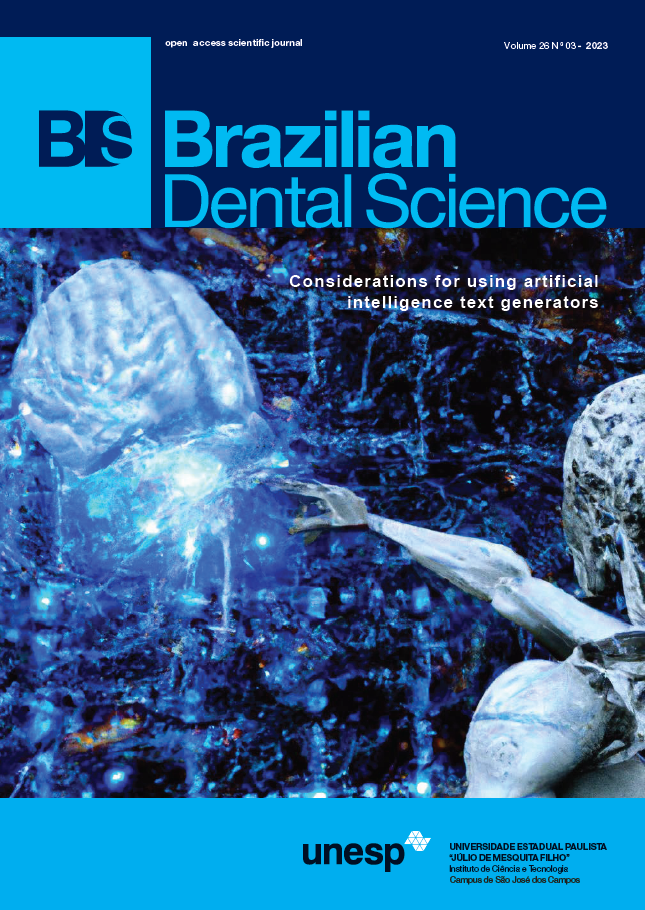Do irrigation solutions used during root canal instrumentation influence the adhesion of glass fiber posts? A systematic review
DOI:
https://doi.org/10.4322/bds.2023.e3856Abstract
Statement of problem: the bond strength between adhesive cement and root dentin can be affected by irrigation protocols. Purpose: therefore, the objective of this systematic review was to answer the following question: Do irrigation solutions used during root canal instrumentation influence the adhesion of glass fiber posts to root dentin? Material and Methods: this study followed the recommendations of PRISMA 2020 for writing. PubMed, Scopus, Web of Science, and LILACS databases were searched for articles published until 26 January, 2022. Grey literature and a manual search were also performed. The inclusion criteria were based on the PICO strategy: permanent human or animal teeth (P), which were irrigated during root canal instrumentation with endodontic substances (I) and compared to irrigation with sodium hypochlorite at various concentrations (C) to analyze the bond strength of glass fiber posts (O). Two authors independently performed data extraction and the risk of bias. Results: eight articles were included. Four articles were classified as having a high risk of bias, where the others as medium risk. Studies have reported conflicting results regarding the influence of irrigating solutions and the different concentrations of sodium hypochlorite on the adhesion of glass fiber posts to root dentin. Conclusion: the heterogeneity between studies did not allow the conclusion of a true estimate regarding this topic, and further well-designed studies are needed to clarify this issue. Register: CRD42020221835.
KEYWORDS
Bond strength; Dentin; Glass fiber post; Root canal irrigants; Shear strength.
Downloads
Published
How to Cite
Issue
Section
License
Brazilian Dental Science uses the Creative Commons (CC-BY 4.0) license, thus preserving the integrity of articles in an open access environment. The journal allows the author to retain publishing rights without restrictions.
=================




























